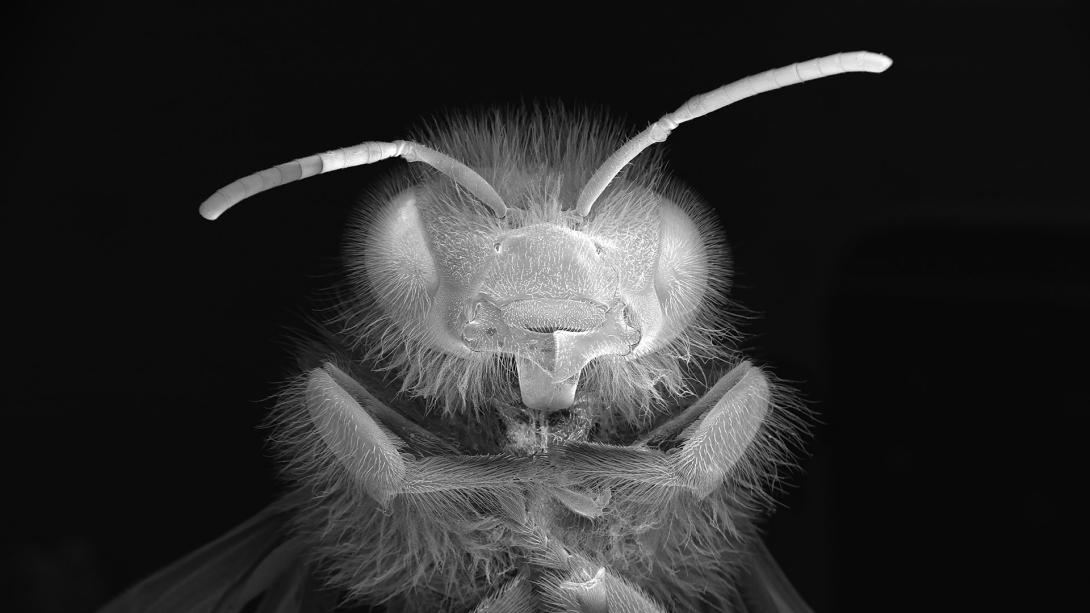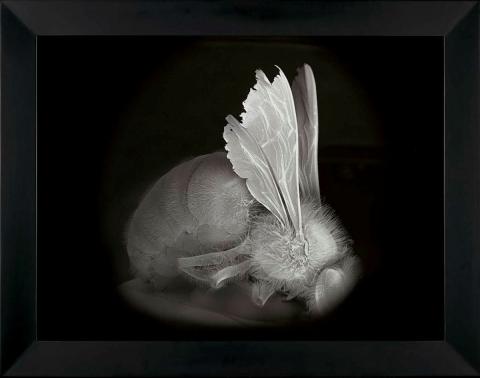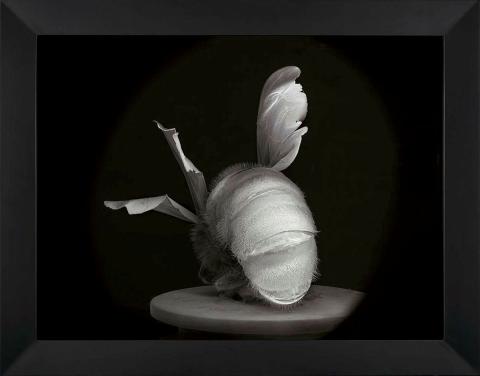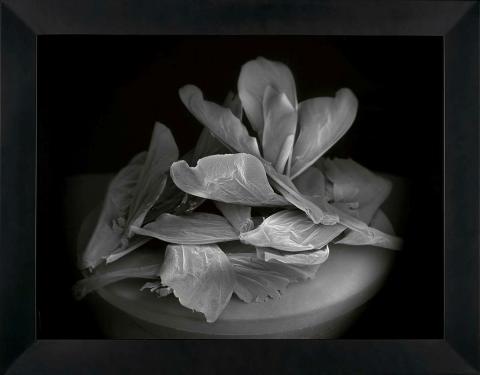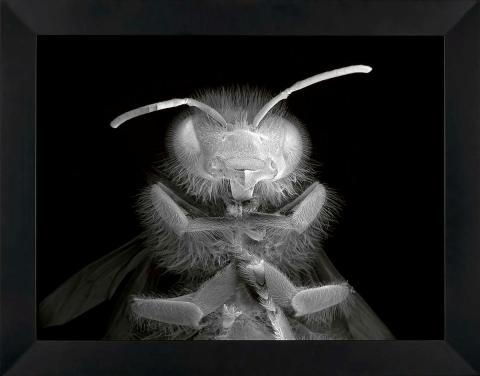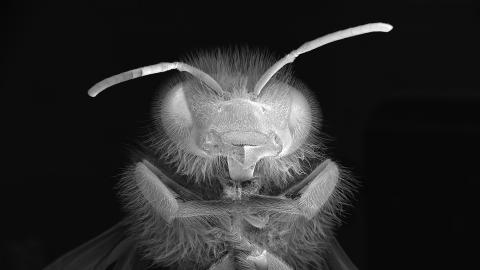Anne Noble
APT9
Born 1954 Whanganui, Aotearoa New Zealand
Lives and works in Wellington, Aotearoa New Zealand
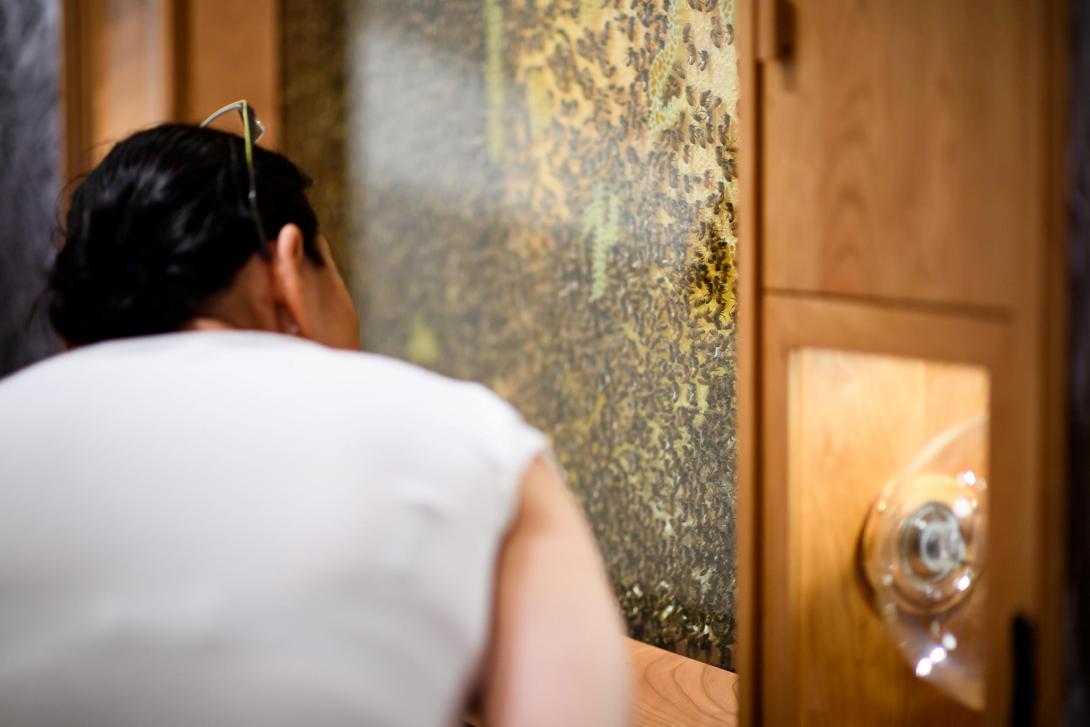
Anne Noble / Aotearoa New Zealand b.1954 / Conversatio: A cabinet of wonder (detail) 2018, installed for APT9 at QAGOMA / Photographs, wooden cabinet, metal, glass, sound, scent, patterned Perspex, colony of bees / 190 x 70 x 170cm / Courtesy: The artist and Two Rooms, Auckland / © Anne Noble / Photograph: Chloë Callistemon, QAGOMA
A practising photographer since the 1970s, Anne Noble creates bodies of work through what she refers to as ‘essays’ or ‘narratives’ of photographic images. Working against the usual idea of the rapid and instant snapshot, hers is an immersive act of looking, resulting in unexpected and thought-provoking work that gets inside her subject matter. Her wide-ranging subjects include a London convent, Antarctica, the coastal and river landscapes of New Zealand, elderly disabled people and their carers, and depictions of her father at his funeral. In recent years, she has turned her attention to the honeybee, a small creature symbolic of our ecosystem’s wellbeing. In her engagement with the bee, Noble has worked with a range of media, from moving image and microscopic photography, to installation, sound and community engagement. She has also become a proficient beekeeper.
Noble created a multi-part project for APT9, at the heart of which Conversatio: A cabinet of wonder is a functioning beehive or ‘living photograph’. Bees could be observed entering GOMA, before disappearing inside the cabinet and going about their normal activities.
For APT9, New Zealand photographer Anne Noble has created a multi-part project at the heart of which is Conversatio: A cabinet of wonder 2018, a functioning beehive or ‘living photograph’. Bees can be observed entering the Gallery, before disappearing inside the cabinet and going about their normal activities; they are also visible when the cabinet is opened twice a day for a short period of time. Noble’s works form a visual ode to an insect symbolic of our world’s wellbeing — their complex ecosystem is at severe risk of collapse as a direct result of human intervention in the environment.
Museum: For a time when the bee no longer exists comprises portraits of bees that recall dust-covered artefacts from another time, together with a 3D printed insect, resembling the ghost from the portraits. In addition, the luscious Bruissement photograms from the ‘UMBRA’ series of 2015–17 are enlargements of images capturing the light around the wings of dead bees — bees that died from pesticide poisoning — as the artist held them in her hands. The last component of the project is a video entitled Reverie 2016, which presents a dream-like encounter with a bee colony.
The artist’s works serve as a catalyst for discussion regarding our complex relationship with the bee. An insect revered historically in myth, religion and literature, as well as in present-day science and industrial research, Noble’s project stimulates awareness of this species whose essential global existence is threatened by pests, chemicals and disease.
